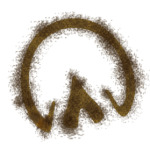Something strange happened the other day when my friend Magic and I took our annual trip to the apple orchard. There we were, happily munching on the “fruits” of our labor, when I saw something whiz past my head and go straight for Magic! I wanted to yell, “Magic, look out!” but my mouth was full of applesauce and before I knew it, the buzzing insect landed right on his nose and STUNG! Magic threw up his head and snorted in reaction to this unpleasant surprise…my poor friend had been caught completely off guard! As much as it is unfortunate that this blog post comes at my friend’s expense, it is important to let you in on the “buzz” about these pesky insects so you don’t have your own unfortunate encounter.
Although many times wasps and bees sting without warning, there are some precautionary measures you can take to prevent you and your equine pals from getting stung. It’s good to avoid areas where you notice a lot of flying insect activity because it could indicate the location of a nest. It’s important to identify the location of nests; insects will most likely attack in these areas. While bees usually build their nests in hollowed-out logs or trees in wooded areas, wasps and hornets prefer to build their papery hives in the open areas of barns and sheds, as well as inside horse trailers. I’m already not a big fan of trailers, but imagine getting in one that’s filled with wasps? Ouch!
Like I said, not all incidents are preventable, and luckily horses don’t usually exhibit serious reactions to a single sting. Usually stings appear as a small area of swelling that can be treated by simply holding an ice pack to the area. Stings happen, and although they aren’t fun, the threat of an occasional bee can’t stop me from visiting my beloved apple orchard!
For more information about these pesky insects, please check out Fact Sheet #1134!
Happy Trails,
Lord Nelson


